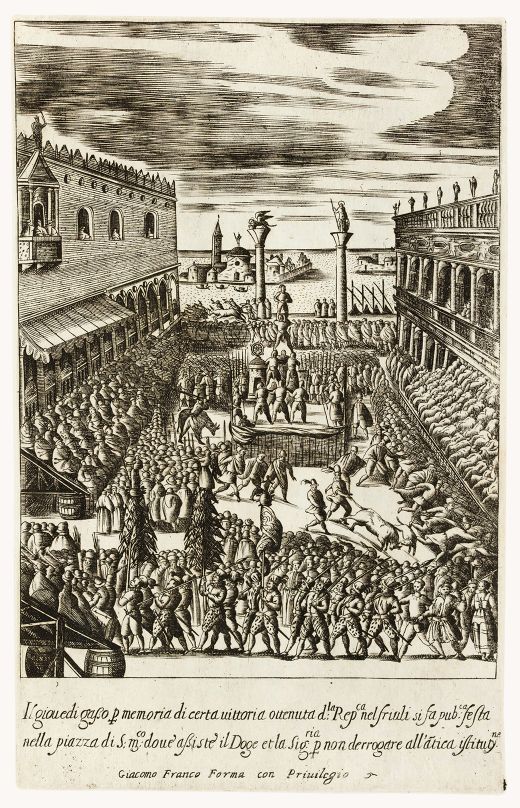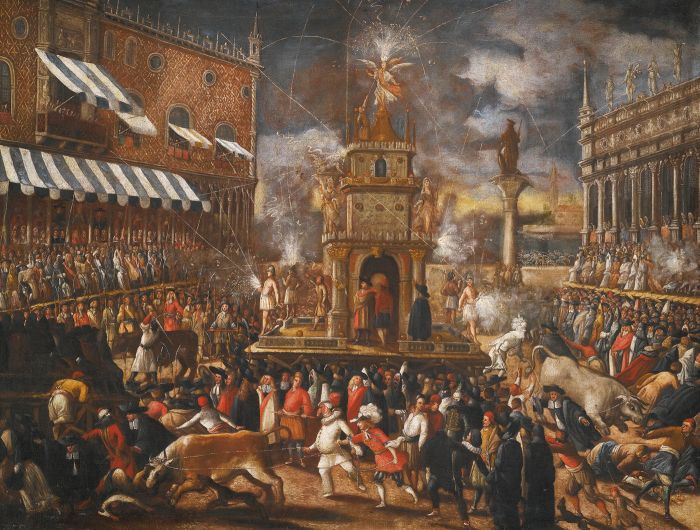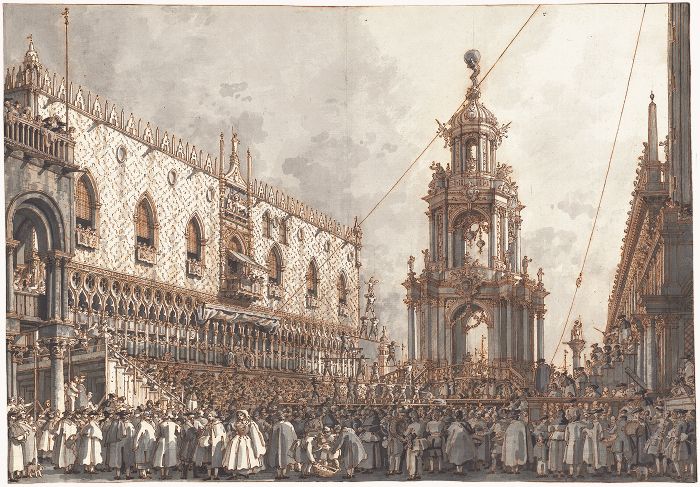

The Fat Thursday celebration is closely related to the history of the Serenissima Republic of Venice, consequently to the victory over Ulrich II Von Treveno, Patriarch of Aquileia.
Ulrich's troops had attacked Venice while the "Serenissima" was busy fighting another war against the Ducati of Padova and Ferrara. Italy was sort of a lively place, at that time.
After the defeat, Ulrich II had to pay the Venetians one bull and twelve pigs, as war reimbursement, each year after 1162.
So, from that moment on, the tradition was established of "executing" every year that same amount of animals in the San Marco square, and all the population participated to the feast, banquet, dances, acrobats.
Carnival was officially born, it started the day after Christmas - December 26, Santo Stefano - and went up to the Giovedí Grasso (Fat Thursday).
Everything could happen in those days: celebrations, pranks, whatever.
"Il giovedi gasso per memoria di certa vittoria ottenuta dalla Repubblica nel Friuli
si fa pubblica festa nella piazza di S.Marco
dove assiste il Doge e la signoria
per non derrogare all'ática istitutyone"
"On Fat Thursday, in honor of a certain victory
that was obtained by the Republic in Friuli,
there is a public celebration in S.Marco square
and the Doge and all the Lordship participate
as not to infringe this old Institution's ruling"

Joseph Heintz the Younger has made immortal several Venice social situation of his time: The Ridotto for instance, but also this very well known image of the "Piazza".
His painting is quite full, the focus is on the general aestetics, but also on the powerful bull chase that is about to happen.
Joseph Heintz the Younger (Augsburg 1600 - Venice 1678): "Venice. The Piazzetta at Carnival on Giovedí Grasso with a fireworks display and the bulls running" - oil on canvas (mid 17th century)

A very austere representation of the Saint Mark's Square during thre Fat Thursday celebration, by Canaletto.
This idea for a representation of the square has been reproduced by other artists of the time (Giovanni Battista Brustolon, for instance), with its geometry and absence of primary actors.
Big crowds, the ropes for the Svolo del Turco, the Square is packed so we know something is or will be happening.
Canaletto: "The Giovedi Grasso Festival in the Piazzetta" - Pen and brown ink with gray wash over graphite and red chalk heightened with white gouache (1763-66)

The Saint Mark's Square on a Fat Thursday, with all the animation, the human pyramid, the scary bulls and lots of people assisting.
The painting is very similar to the one from Joseph Heintz the Younger, but with the Forze D'Ercole on the right side.
Also the vibrance of the atmosphere, color and dynamics of the situations and characters is quite stronger in my opinion.
Venetian School, Attributed to Alessandro Piazza (active in Venice 1691-1700): "The Giovedí grasso festival with the Forze d'Ercole in the Piazetta, Venice" - oil on canvas (ca. 1700).
